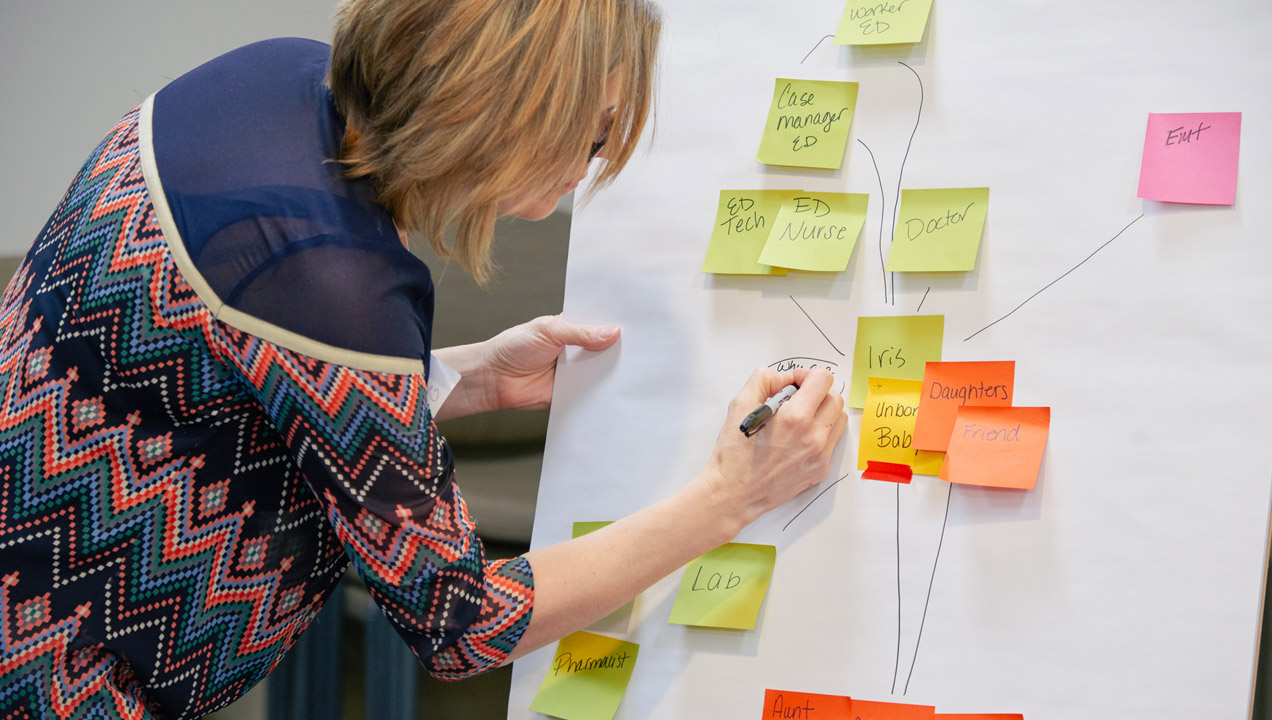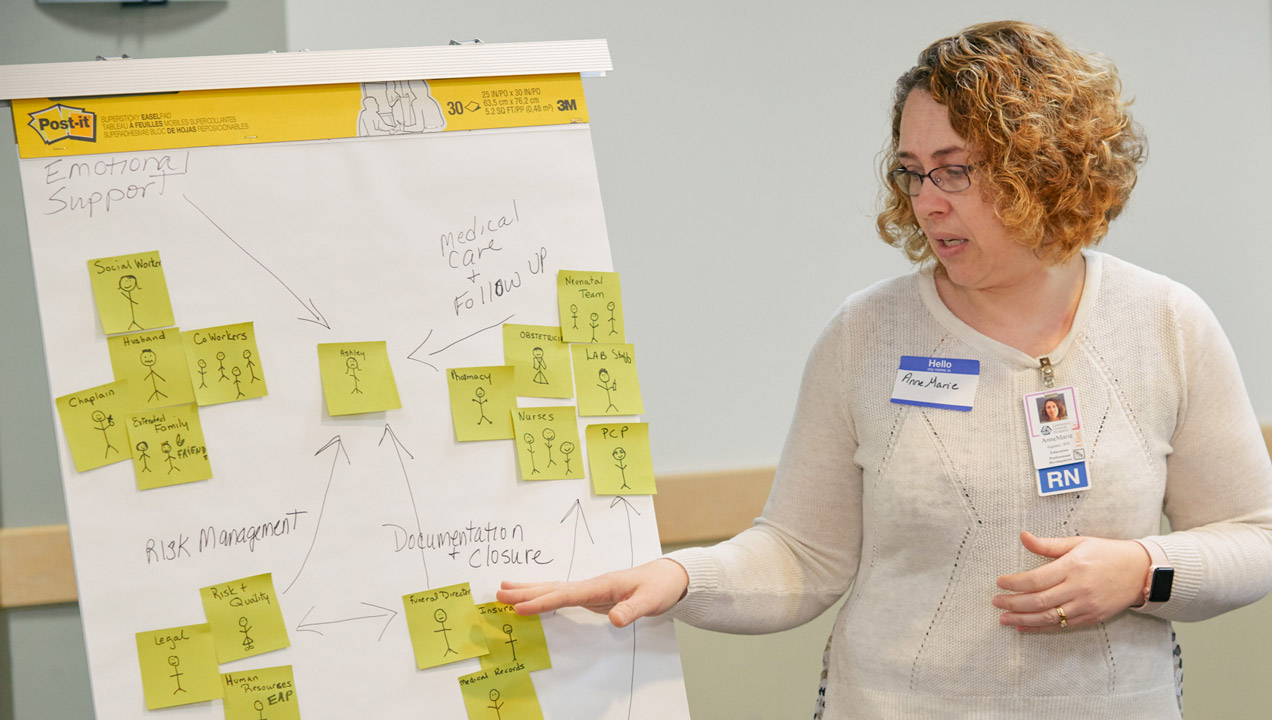Guiding Principles of Design Thinking Workshops
When recently running onsite workshops, such as those for Lawrence General Hospital, we started thinking about general rules of thumb for the Design Thinking workshops that we run for clients. A framework that we can all use during these vital visits.
The purpose of these workshops is to provide clients with the tools that they will need to move forward, spreading design thinking throughout their organizations, to help break down the barriers between different parts of a big business to improve to flow of communication and understanding and to foster empathy, both towards users and co-workers.

Communication is Key
The first thing that we need to establish before we can even run a workshop is that we are talking to the right people and giving them information that they can understand and use. It is important for some of the people involved in the workshop to be able to actively influence the way that their business is run. There is no point in providing all the tools to make fundamental changes to an organization to somebody who doesn’t have the power or influence to make any changes.
Set Context and Expectations
While we always try to set expectations and establish the context of Design Thinking within the larger framework of an organization ahead of time, the first part of every Design Thinking workshop always has to be devoted to ensuring that the information that we have collected reflects the realities that the participants have experienced. It takes time for people to commit and engage with the contents of a workshop, so taking the time to develop some understanding in both directions is a great way to establish the trust needed to move forward.

Think About Stakeholders and Participants
It is vital to invite participants from across the whole of the business, not just the executives. Large organizations have a tendency to stratify and form into small groups that speak in their own jargon and communicate poorly with other groups. By bringing in participants from the front-office, back-office and a few wild cards who interact with everyone you can ensure the best breadth of experience about the business, changing the dynamic of the workshop and adding insight from outside contexts.
Outline the Next Steps
Providing the workshop attendees with tools like journey maps and personas to better understand their users is a great way to build empathy, but it doesn’t necessarily provide them with the tools to fix the problems that they use that empathy to identify. Setting some time aside at the end of the workshop to brainstorm solutions to the specific problems while attendees from across the business are still present and able to give feedback is a great way to ensure that the next step is positive for everyone involved.

Purpose of Place
When setting up a workshop it is important to ensure that there is access, space and facilities to suit everyone who is going to be attending. To lay out the seating in such a way that people can work in small groups but also easily communicate with the whole group. And to ensure that there is somewhere to attach all of the copious number of sticky notes that are required to capture every data point, thought and planned action.
Design Thinking requires a complete change of outlook from the traditional ways in which businesses and organizations are run and there is no way to cover all of the complex ways that human psychology and behavior interact with organizations, hierarchies and technology in a single day, but if the people in attendance can be convinced to start looking at the way that they run their business and start placing humans at the centre, change will ripple out and affect everything from the top to the bottom.
